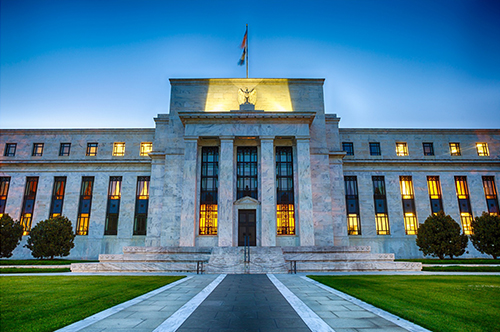Fed Meeting Breakdown

This past week, the FOMC released their Monetary Policy Statement, and Chair Jerome Powell hosted a press conference to discuss the economic outlook and the path of interest rates. Let’s discuss what was said, how the markets reacted, and what the future may hold.
Fed Taking Away the Punchbowl
“In light of the remarkable progress we’ve seen in the labor market and inflation that is well-above our 2% long-run goal, the economy no longer needs sustained high levels of monetary policy support,” Jerome Powell – Press Conference January 26, 2022.
This quote, by Jerome Powell, says it all. The current Federal Reserve is much like the one we saw back in 2018. At that time, the Fed hiked rates multiple times and trimmed their balance sheet. Back in 2018, the Fed also hiked too many times causing the financial markets to decline sharply. The Fed then spent the rest of 2019 reversing its position by halting the balance sheet runoff and cutting rates in June 2019.
“The committee is of a mind to raise the federal funds rate at the March meeting ‘ASSUMING’ that the conditions are appropriate for doing so”.
The “assuming” part leaves the door open for the Fed to do nothing should economic data disappoint over the coming weeks. It is clear the Fed wants to hike rates, but it is not clear whether the Fed will be able to be as aggressive in doing so. The uncertainty that comes with this will lead to a lot of market volatility in stocks, bonds, and rates.
“In the longer run, the Committee intends to hold primarily Treasury securities in the SOMA, thereby minimizing the effect of Federal Reserve holdings on the allocation of credit across sectors of the economy.” FOMC Statement, January 26, 2022.
This is probably the most important takeaway for the housing sector. Here is what it means…once the Fed stops buying bonds and starts hiking rates, they have a desire to trim or shrink their balance sheet. In doing so, they only want to hold Treasuries. This means they will no longer reinvest in mortgage-backed securities (MBS) and could become actual sellers of MBS in the future.
Last Wednesday, MBS reacted very poorly to the idea of the Fed selling bonds. If the Fed were to do this, we should expect higher home loan rates. Fed Chair Powell also shared the Fed will discuss what balance sheet reduction might look like over the next couple of Fed Meetings.
“Inflation risks are still to the upside in the views of most FOMC participants, and certainly in my view as well. There’s a risk that the high inflation we are seeing will be prolonged. There’s a risk that it will move even higher. So, we don’t think that’s the base case, but you asked what the risks are, and we have to be in a position with our monetary policy to address all of the plausible outcomes,” J. Powell.
The direction of the Fed will be determined by the incoming data. The financial markets have priced in three rate hikes, with the first coming in March. Should inflation moderate over the coming months, the Fed may not hike rates three or more times. But, if inflation does go higher or remains high, the Fed might very well be forced to hike rates further. This will make for an uncertain and volatile year for the financial markets in 2022.
Bottom line: The sentiment in the financial markets has shifted very quickly. The Fed went from a tailwind to a headwind as it relates to rates. Market volatility will be high. If you are considering a mortgage, rates are still suppressed thanks to the Fed bond-buying program which will end in March. Don’t delay.


